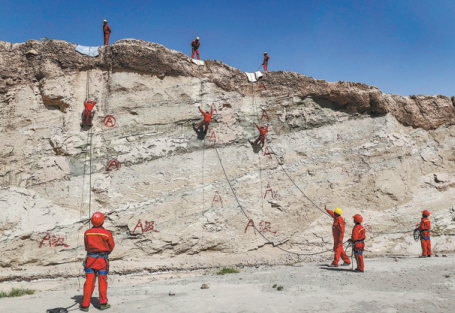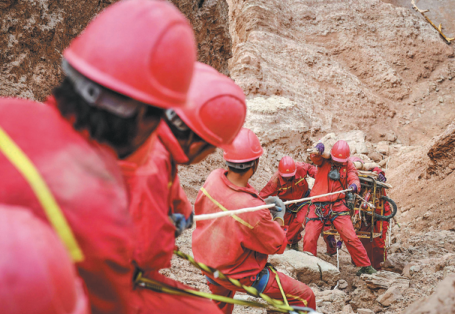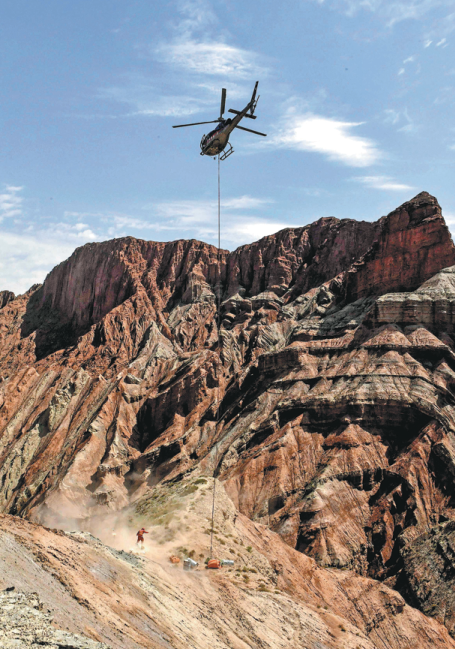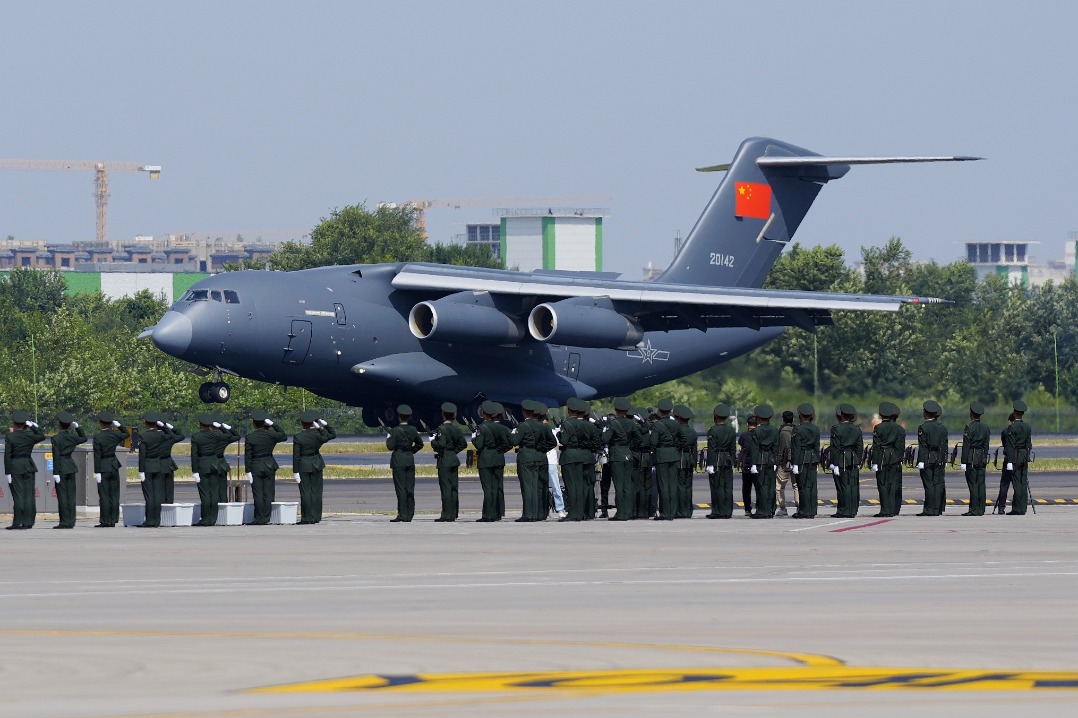Digging for oil and dreams in the northwest
Success of energy exploration in barren Qiulitag Mountains is worth hardship, say surveyors on the front line

URUMQI-In the middle of the remote, mighty Qiulitag Mountains in the Xinjiang Uygur autonomous region, Wang Zijian carefully collects water and daily necessities dropped from a helicopter hovering in midair.
"The helicopter comes once a week and provides two buckets of water for cooking, drinking and washing for the three of us," Wang said, referring to his colleagues. "Geological conditions are difficult deep in the mountains, and sometimes we save rainwater."
Wang is a surveyor for the State-owned China National Petroleum Corporation. He is responsible for measuring and locating the spots for oil and gas exploration, and placing oil rigs through a global positioning system before any project starts. As part of his work, he marks prospective strike locations for future exploration with small flags.
The job is tough, but extremely important.
Authorities have made major oil and gas breakthroughs in the Qiulitag Mountains in the Tarim oilfield. They recently found a gas field able to produce 330,000 cubic meters of natural gas and 21.4 cu m of condensate on a daily basis, in the middle of the mountains.
Not far away from the Qiulitag Mountains, a huge gas field powers China's massive west-to-east gas transportation project, providing energy for more than 3,000 enterprises and 400 million residents in over 120 cities.
China produced 157.5 billion cu m of natural gas in the first 11 months of 2019, up 9.2 percent year on year, according to the National Bureau of Statistics.
The potential in the Qiulitag Mountains is set to add tremendously to the supply.
"We have to blaze new trails in places where no one ever sets foot," Wang said. "No matter how difficult the road is, we carry on."
No man's land
The Qiulitag Mountains stretch across the counties of Kuqa, Xinhe and Baicheng and have no roads or telecommunication. Labeled the "Barren Mountains", the ranges are steep and jagged, and the valleys they form drop away like abysses.
There is a saying among locals that "even gazelles and eagles cannot cross the mountains"
While the area is one of the most difficult places for oil and gas exploration, it also boasts the potential for almost a trillion cu m of natural gas, according to geologists.
In 2017, Wang and his colleagues arrived to take on the challenges in the Qiulitag Mountains.
"The potential was unexpected, and we began our surveys in the fields," Wang said.
Phase one of the project covers more than 240 square kilometers, with cliffs everywhere. Every step taken in the area requires extra concentration to avoid a mishap. "Because the mountains are high and there are many cliffs, we haveto get living supplies from helicopters," Wang said.
As there are only eight places for the helicopters to land, most of the time they just hover in the air and drop the supplies.
Wang has to walk the jagged mountain terrain daily to take measurements, place equipment and collect data.
He wears out a pair of gloves every day, and runs through a pair of shoes a week. "It is one of the toughest projects I have ever worked on," he said.
Perseverance
The most difficult part is the rigging. A rigging machine usually weighs up to 800 kilograms, and an individual part can weigh as much as 100 kg. Wang and his colleagues also have to carry the water and oil needed to operate the rigging. "Digging is not that hard, but carrying the machine parts sure is," Wang said.
The job is highly technical, and each worker has to go through intensive training before working in the mountains.
In less than four months, Wang and his colleagues have managed to explore more than 500 sites in the mountains. Many workers have developed calloused shoulders from carrying heavy machinery.
But their hard work has paid off.
The Tarim oilfield will churn out 30 million metric tons of oil this year and 36 million in 2025, according to official estimates.
"We have a strong spirit of perseverance," Wang said. "Even though the job is hard, it is worth it."



Today's Top News
- Chinese Vice-Premier He Lifeng to go to Spain for trade talks with US: commerce ministry
- China tests moon-mission rocket
- Martyrs' remains return to homeland
- Forum eyes world peace and stability
- FM urges US to 'exercise prudence in words, deeds'
- Large lenders go all in on tech finance






























